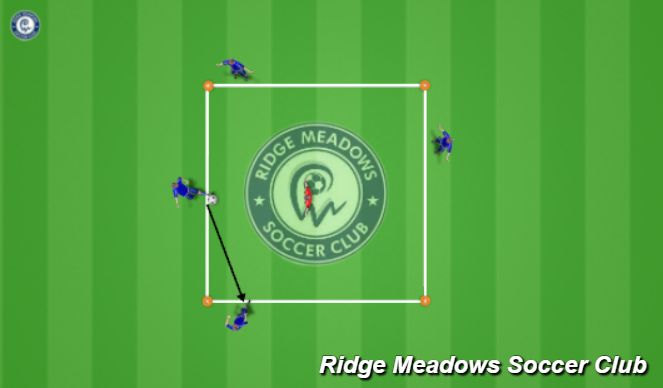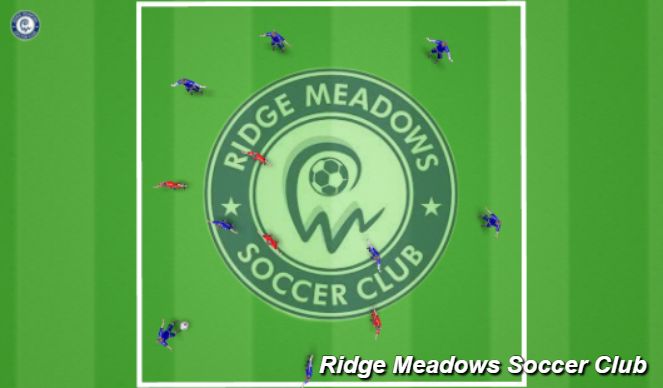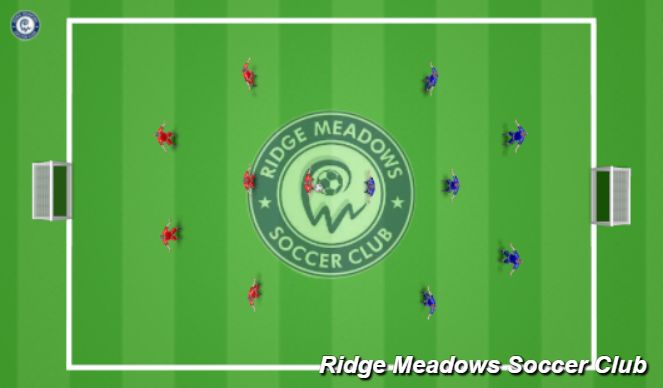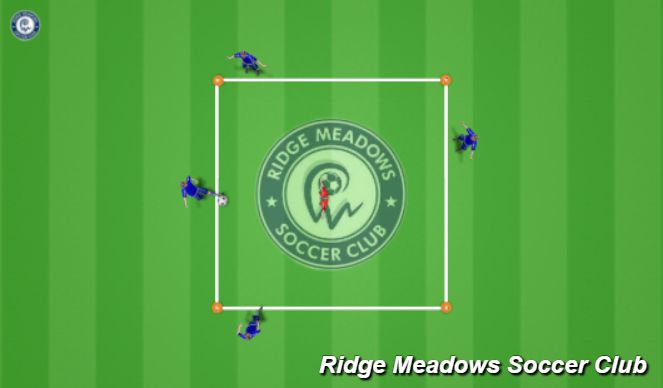Football/Soccer Session (Academy Sessions): RMSC Div3 - Receiving and Controlling with Intent

Profile Summary

| Name: | Daniel De Wet |
|---|---|
| City: | Ridge Meadows |
| Country: | Canada |
| Membership: | Adult Member |
| Sport: | Football/Soccer |
Description
This session focusses mostly on Ball Control, with the focus of teaching players that if the are INTENTIONAL with their touch when controlling the ball, it can be very helpful to improve your overall execution of the basic actions of the game (passing, dribbling and shooting).
It is all well and fine when a player can trap a ball, but when they can trap it into space, it will unlock their options in the game to a whole new level.

See the guidance at the top of this page to understand why you are not seeing interactive Football/Soccer images.

Controlling the Ball with Intent
RECAP Passing Technique
Just pass back and forward for a few minutes and Focus on Passing Technique (Not in animation)
We use the inside of the Instep (see attached image = Inside Foot Area) - Why? It is big surface area, allows us to have more control.
We place balancing leg next to the ball and point toe to where we want ball to go - Why? It directs our movements in the direction we want the ball to go, and allows us to make contact with the middle of the ball consistently
We attempt to kick the ball in the middle (see attached image = Kick Straight) - Why? It is a big surface area, allowing us more control and it directs all the momentum and power directly into the ball sending it forward with more accurately and with pace.
We follow through with straight forward - Why? It lets the ball go in a straight line, if it starts coming across the body, you will pull the ball.
We step into the ball to get more power, rather than swinging our leg faster - Why? Stepping into the ball quicker, generates more momentum and thus we have more power. If you swing your leg quicker, technique may be sacrificed and accuracy impacted as a result.
FOCUS Controlling the ball with Intent
When receiving the ball, we do not always want to stop the ball dead at our feet, pressure will be coming to the player receiving the ball, so their first touch should be of such a nature that it actually relieves some pressure. This is achieved by touching the ball into space when receiving it = Controlling the ball with Intent
In this activity we simplify things, and just challenge players to touch the ball around a pair of cones, getting them used to the fact that we don't just want to trap the ball, but that we want to keep momentum and be progressive and intentional with our touches on the ball (See animation).
Breakdown of technique for receiving the Ball
Use the Inside of the Instep and attempt to make contact with the middle of the ball. Receiving the Ball is almost passing in reverse. Attempt to meet the ball with foot hovering just above the ground with the Inside of the Instep directed to the oncoming ball, so that you can cushion the ball on impact.
Why? Big surface area on Big surface area allows the most control.

See the guidance at the top of this page to understand why you are not seeing interactive Football/Soccer images.

Rondo - with Intent
Go back into earlier Rondo stations and let players play again (either 4 or 5 man rondo's is fine), while applying the Two-Touch Football Concept, but changing the main focus to controlling the ball with the Backfoot, while being Intentional (Blue dash in animation) into which space you control it, so that it can simplify your following action (Black dash in animation).
On the last few animations, is an example of why at times it can be helpful to take a touch towards pressure! Doing that can make a defender think they have a chance to get the ball, and commit to the player. However, by overcommitting instead the opposite happens, and they can expose themselves and their team, presenting the player with multiple options and easy ways out for his teammates.

See the guidance at the top of this page to understand why you are not seeing interactive Football/Soccer images.

Keep Away - Intentional Actions
FOCUS - Have Intentional Touches into spaces (Blue dashes), to help you with your following Actions (Black dashes) - See Animation
Form 2 groups (numbers up for attackers, no less than 2 defenders. adjust based on player ability)
1 group will work to keep the ball, while the 2rd group will attempt to win it, on winning it they should try to dribble out of the playing field to get a point.
Attacking teams get a point after connecting a certain amount of passes (adjust based on player ability, no less than 4).
Defenders should be in for a duration of around 2min, and then switched with attackers.
Performance Teams: Set-up can be 3 groups of equal size (uneven numbers add a neutral for attackers). 2 groups work together to keep possession, and 3rd group as defenders. Use same rules as above, or as a further progression it can be made so that if the defenders wins it from one colour, they can start playing keep away with the 3rd colour, and the group that lost it transitions into defending.

See the guidance at the top of this page to understand why you are not seeing interactive Football/Soccer images.

Scrimmage - Reward Passing
Play a Normal Scrimmage, but add a extra scoring method, apart from normal goals.
Example:
If you make more than 5 (adjust based on ability) passes leading up to a goal, that goal will count as 2 goals.
If you make more than 5 (adjust based on ability) passes in the opponents half, you get a point.
Adjust to players ability level, but do not make it too easy. The reward should match the effort.










 Play animation
Play animation Play step-by-step
Play step-by-step Repeat (toggle)
Repeat (toggle) Full Screen
Full Screen Pause
Pause Stop
Stop
Basic Rondo
Rondo stations, let players just play (either 4 or 5 man rondo's is fine), while reminding them of the following Concepts:
- Two-Touch Football: Control-Decision-Action
- Backfoot Ball Control: Foot Furthest Away from the Ball
- Supporting Underneath: Giving an easy passing angle behind a player